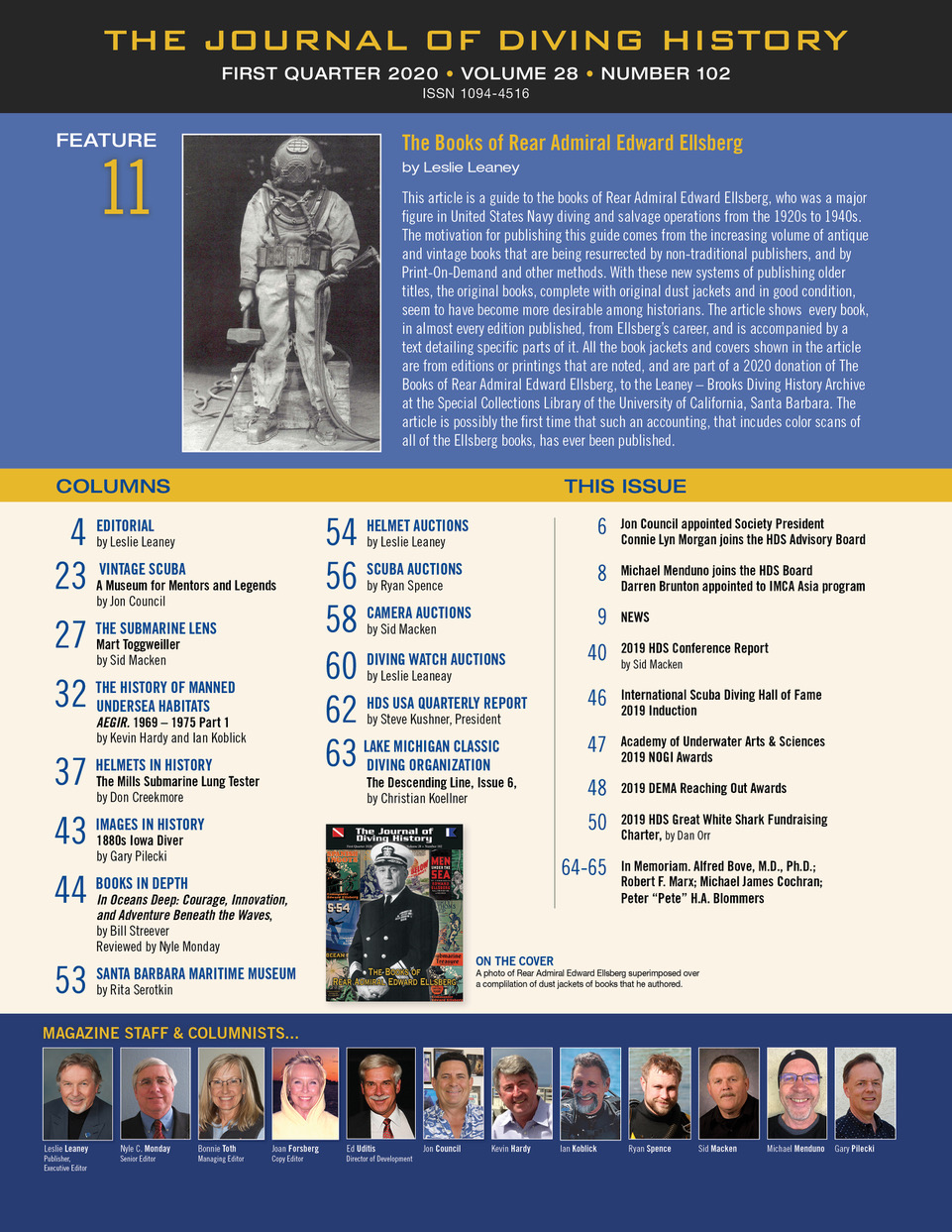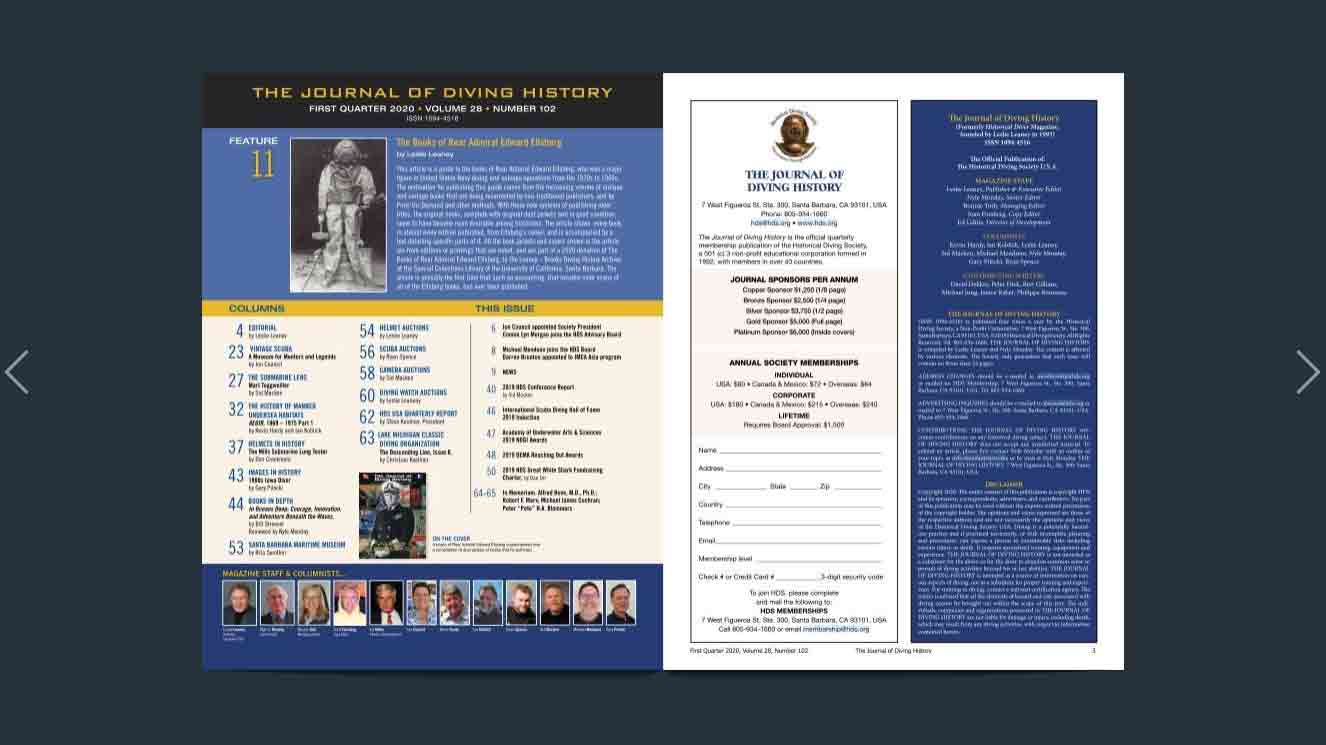

Journal Details
The Journal of Diving History is the official publication of the Historical Diving Society.
In this issue
EDITORIAL – by Leslie Leaney – pg 4 Entering the Society’s 28th year. PRESIDENT’S MESSAGE – Jon Council – pg 6 Appointments and Awards – pg 6 Jon Council appointed Society President Connie Lyn Morgan joins the HDS Advisory Board Technical Diving authority Michael Menduno joins the HDS Board Darren Brunton of K.B. Associates appointed

